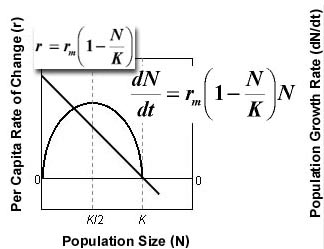Expertise Asia has posted almost 1,000 articles over the past 5 years. Interested readers have the option to contribute to the publication, as an acknowledgment of the value provided to them. Contributions do not commit the author to future production. Thank you for your continued support.

We have always known Janet Yellen to be a cautious lady. And we have all heard about the so-called dovish hike she performed last week. Amid all the right tunes, at least towards the hawks in this world, she expressed her expectation of a US economy in rude health which warrants gradual increases in rates, giving that all-important hint to the many hanging on her lips that there will be two more hikes in the course of 2017.
So, the rates environment is on track to be normalised, or so it seems. The majority of pundits take this to believe we will go back in history to converge to actions of other Fed chairs. Memory quickly takes us back to Alan Greenspan in the mid-2000s, when he raised rates 17 consecutive times in gradual 25bp moves until they topped 5%. There was nothing dovish about that, and by the way, we know how it ended.
But apart from that, there is a fundamental difference between then and now the mainstream is so eager to ignore. Then, it was the action of a Fed that performed its remit in a cyclical economic environment. Whoever thought that the same medicine was applicable in today’s world is simply mistaken. We have long thrown overboard the cyclical nature of our Western economies. They are much rather driven by structural changes.
Alternate influences than what we have had from pretty much after the War until the financial crisis are at work. Structural means we have differently shaped societies that present us with new economic patterns. Demographic trends, particularly in Japan and Europe but also in America, have been changing these patterns for good. They now rule over different kinds of supply, demand and inflation mechanisms than we were used to in the past.
Structural also means we are facing more so than ever an onslaught of a technological transformation. Moore’s law is long gone. Speed and capacities of computer chips and software in the context of artificial intelligence are easily outpacing the rule of doubling every 18 months. Our lives will be fundamentally changed going forward, and it will be next to impossible to devise an education strategy for our new generation to keep up.
Structural in this sense also means that technology will allow us to exploit much further the phenomenon of a sharing economy. Capacity utilisation is only in its infancy. Once ride-sharing, Uberism, driverless transportation, and the likes of Airbnb put their roots down more firmly and begin to mushroom, one will wonder if, apart from infrastructure, we as a society really need to increase fixed investments from here.
Robotics, or more generally Industry 4.0, is another aspect of this structural shift. No, it doesn’t look at all like a resembling of the industrial revolutions in the past. Creative destruction may at one point soon not provide us with other, more value-added, opportunities to make our livings. To be sure, some talented few will certainly benefit from this development, but our wider society as such…?
While the Fed keeps talking about the economy and monetary normalisation much like in the old days, it would be foolhardy to assume the sages of central banking didn’t understand these underlying grumblings. And I believe they do. The question rather is whether an institution like the Fed can just concede to a fundamentally new paradigm, throw every piece of rulebook overboard, and reflect an all-change attitude overnight.
Central banks, much like the political cast, are meant to serve society primarily by providing a sense of security. Terms such as rude health, normalisation, gradual action, warranted, and all the other soothing words the linguists among them come up with, are being repeated ad nauseam to leave the masses with a level of comfort, even though the underlying truth may be something else entirely.
It all comes down to communication, and we know from evidence that the Yellen crew isn’t very good at it. And so, we are lured to believe the gradual normalisation is on course, while most indicators justifying it are lagging in our faces. How else can Yellen keep a straight face when the Atlanta Fed reduces its Q1 GDP forecast from 3% to 0.9% in the space of 10 weeks, February industrial production remains unchanged, and productivity slides?
The smart money is not that easily fooled. It is picking up on it, and we have seen what that entails. In her attempt to walk a tightrope Yellen will not sacrifice her exit door of data dependency. You watch… if those macro numbers don’t come in to justify further action, your 3-4 hikes in 2017 will fly out the window as quickly as the pundits deem them to be a certainty. Just take the 10 year Treasury yield as a guide.
The postings on this website are confidential and private. The material is provided to you solely for informational purposes and as a complimentary service for your convenience, and is believed to be accurate, but is not guaranteed or warranted by the author. It has not been reviewed, approved or endorsed by any financial institution or regulatory authority in your jurisdiction. It should not in any way be construed as investment advice and/or -recommendation of any kind, in any market and in any jurisdiction. The views expressed therein are none other than the author’s personal views. He is not responsible for any potential damages or losses arising from any use of this information. The reader agrees to these terms.